If you’re drawn to the elegance of purple blooms and happen to garden in Texas, you’re in for a treat. This state isn’t just about cacti and heat; it’s home to an amazing variety of flowers that show off shades of lavender, violet, and deep plum.
Purple flowers often carry meanings of admiration, pride, and mystery, making them a gorgeous addition to any landscape.
Whether you’re creating a romantic garden corner or just want pops of color that stand out in the sunshine, these purple flowers thrive under the Texas sky.
Here are 15 stunning purple Texas flowers you’ll love seeing bloom year after year.
#1 Australian Violet
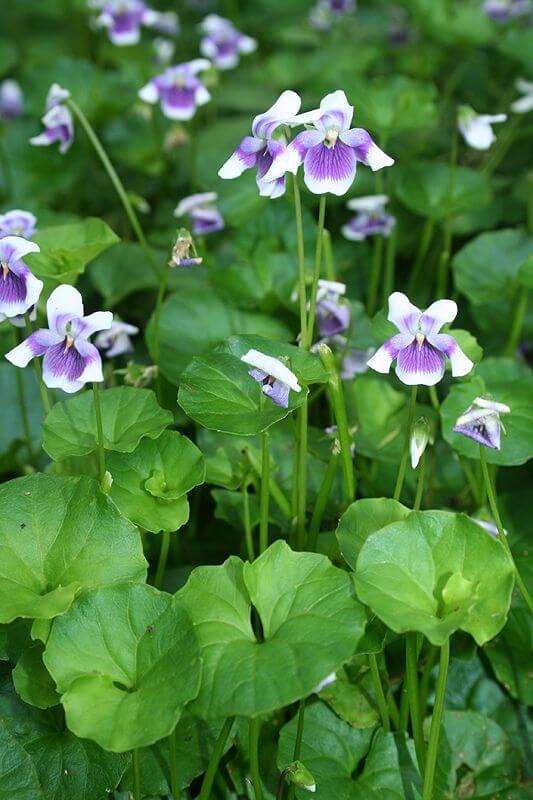 Source: Thetutuguru
Source: Thetutuguru
Australian Violet adds a delicate touch to shady corners with its soft lavender blooms and trailing habit. The flowers grow close to the ground and pop beautifully against moist, dark soil.
It stays low, making it perfect for edging or filling in between stepping stones. Partial sunlight and well-drained, organic soil help it stay healthy. Try watering regularly to keep the roots cool, especially during dry spells.
#2 Alyssum
 Source: Growjoy
Source: Growjoy
Alyssum brings a soft purple mist to your garden with clusters of tiny, fragrant flowers. The scent is sweet and noticeable, especially in the evening.
It starts blooming in early summer and continues until fall if kept well-watered. This plant thrives in sunny to lightly shaded spots and prefers light, well-draining soil. Adding a bit of mulch can help keep the soil cool and extend blooming.
#3 Mexican Oregano
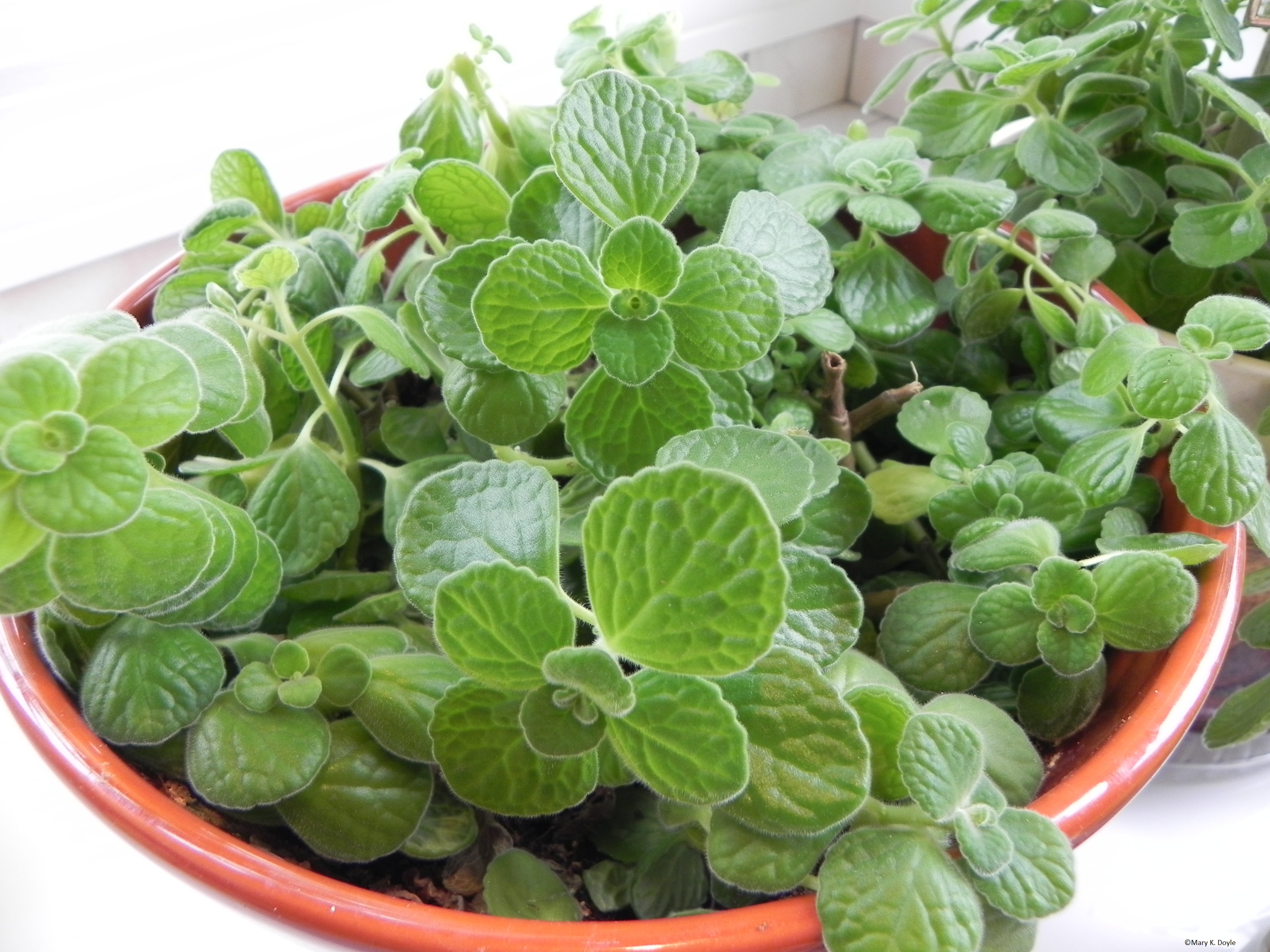 Source: Midwestmary
Source: Midwestmary
Mexican Oregano blends function and beauty with its aromatic leaves and lovely tubular purple flowers. It blooms from spring into fall, attracting butterflies while also doubling as a cooking herb.
Full sun and slightly alkaline soil suit it best, and it’s drought-tolerant once established. Occasional pruning keeps it looking tidy and promotes fuller growth.
#4 Aster
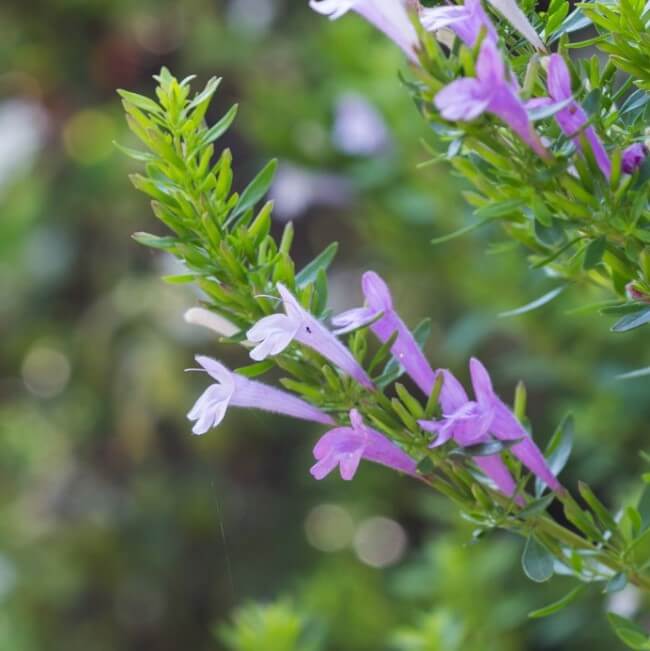 Source: Gardenstylesanantonio
Source: Gardenstylesanantonio
Aster brightens up late summer gardens with bursts of purple star-shaped flowers. These blossoms appear just when many others fade, adding vibrant color into early fall.
It prefers full to partial sun and grows well in loamy, well-drained soil. Regular deadheading can encourage more blooms, and a little compost in spring helps it thrive.
#5 Texas Sage
 Source: Gardeningknowhow
Source: Gardeningknowhow
Texas Sage stands out with its silver foliage and lavender-purple blooms that appear after rainstorms. The shrub loves full sun and doesn’t mind dry, rocky soil, making it a favorite in xeriscaping.
Its natural shape is tidy, and trimming isn’t always necessary. For better blooming, try spacing plants well to improve airflow around the leaves.
#6 Spotted Beebalm
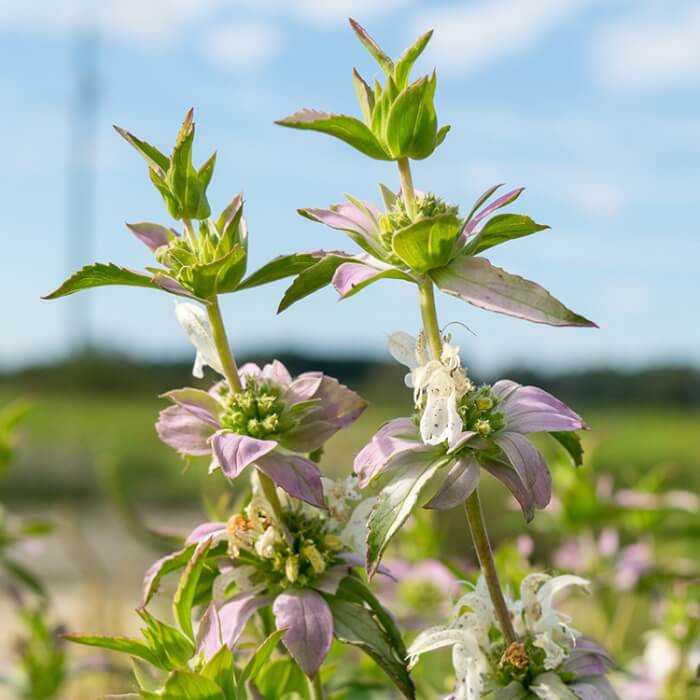 Source: Garrettseed
Source: Garrettseed
Spotted Beebalm shows off unusual yellow-and-purple spotted blooms that form spiky, stacked clusters. It grows in dry, sandy soil and welcomes pollinators like bees and butterflies.
Full sun brings out the best flower production. Leaving seed heads in fall gives your garden texture and supports wildlife through winter.
#7 Zinnia
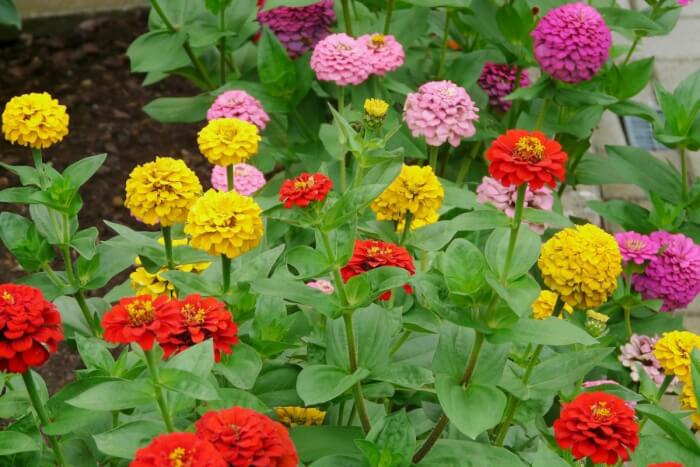 Source: Almanac
Source: Almanac
Zinnia is full of energy, offering bright purple among a rainbow of possible shades. The flowers are large and long-lasting, drawing butterflies all summer.
It grows quickly in full sun and prefers soil that drains well. You can encourage new blooms by pinching off old flowers regularly and keeping soil evenly moist.
#8 Dwarf Mexican Petunia
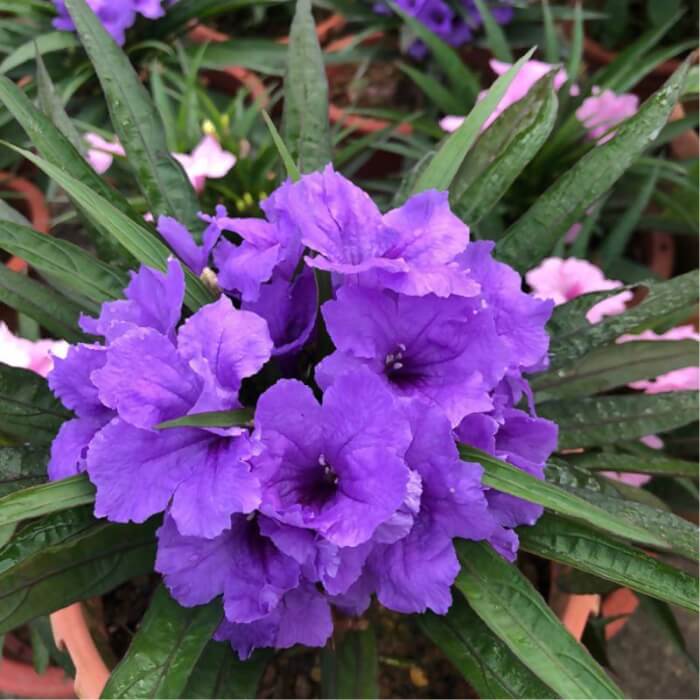 Source: Noahgardencentre
Source: Noahgardencentre
Dwarf Mexican Petunia blooms in soft violet shades and keeps flowering from summer until frost. The glossy green leaves give it a tidy, compact look that works well for borders.
It handles heat well and grows in full sun or partial shade. A little mulch helps it retain moisture, and occasional trimming can keep its shape neat.
#9 Purple Verbena
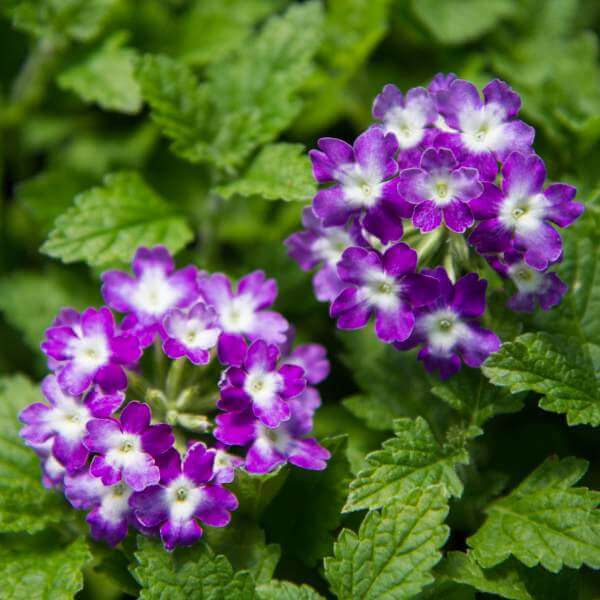 Source: Ncfarmsinc
Source: Ncfarmsinc
Purple Verbena spreads low and wide, forming a fragrant carpet of star-shaped blooms. It’s perfect for covering bare spots or spilling over garden edges.
This flower likes full sunlight and does best in light, sandy soil. To keep it blooming, try trimming back spent flowers and feeding it with a slow-release fertilizer early in the season.
#10 Anise Hyssop
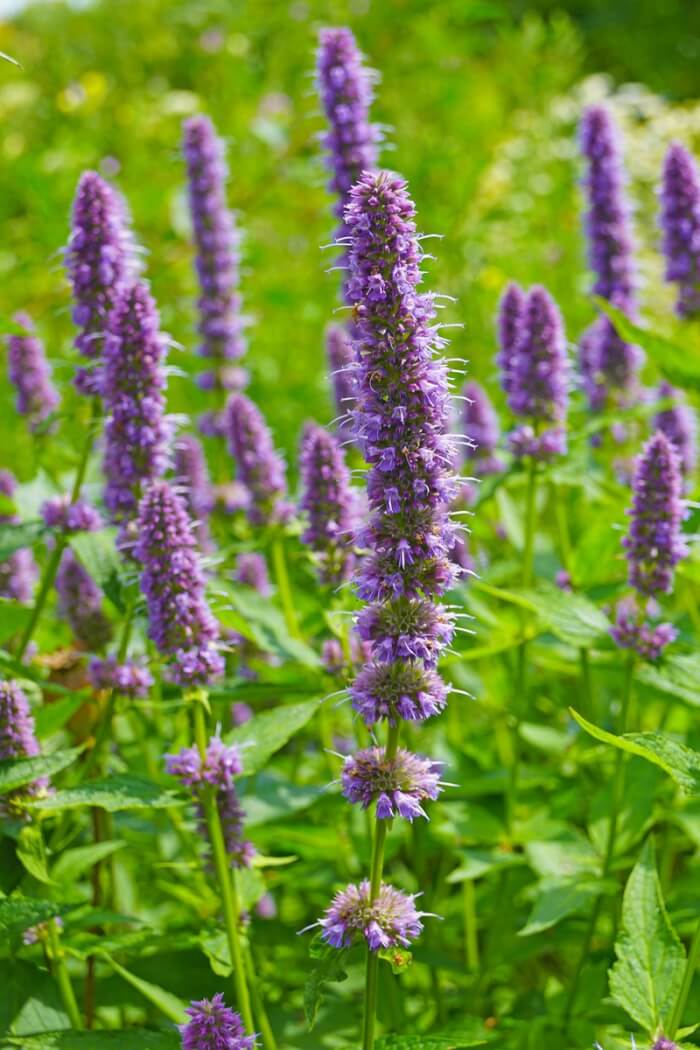 Source: Seedsireland
Source: Seedsireland
Anise Hyssop gives off a sweet, licorice-like scent and shows purple flower spikes that pollinators love. The blooms are also edible, adding color to drinks or salads.
It grows in full sun to part shade and enjoys well-drained soil. For fuller growth, watering deeply but less often can help roots stretch and strengthen.
#11 Dianthus
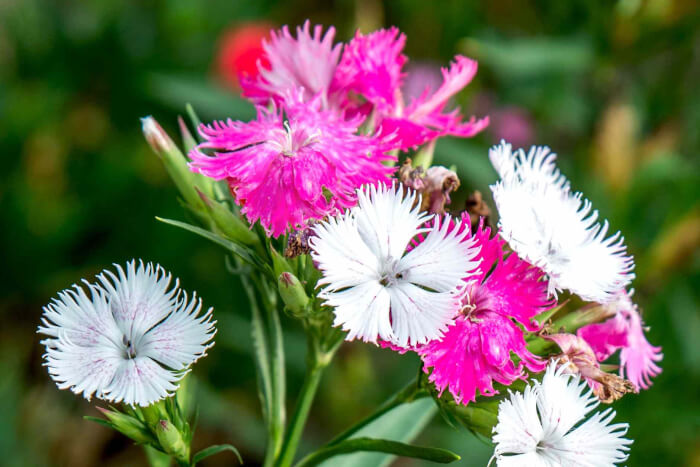 Source: Thespruce
Source: Thespruce
Dianthus offers purple tones mixed with pinks, reds, and whites, all with a soft clove scent. Its blooms have a charming frilly edge that adds a vintage touch to garden beds.
It likes sunny spots and well-draining soil that stays on the dry side. Cutting back after the first bloom helps encourage another round of flowers.
#12 ‘Henry Duelberg’ Salvia
 Source: Ecoblossom
Source: Ecoblossom
‘Henry Duelberg’ Salvia puts on a vivid show with its spikes of deep purple-blue flowers that keep hummingbirds coming. This plant handles heat and drought with ease, making it reliable in harsh Texas summers.
Full sun keeps it blooming for longer. You might want to cut it back in mid-summer to help it flush out new growth.
#13 Texas Bluebell
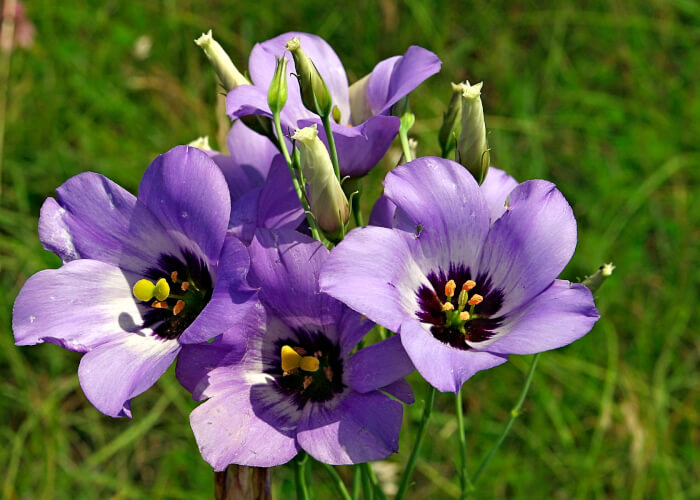 Source: Houstonchronicle
Source: Houstonchronicle
Texas Bluebell is a native stunner with large, bell-like flowers in rich purple or blue tones. These blooms appear in late summer and keep going into early fall.
It grows best in open spaces with fertile, prairie-type soil and full sun. Watering regularly in dry spells helps it last longer, especially in sandy areas.
#14 Gayfeather
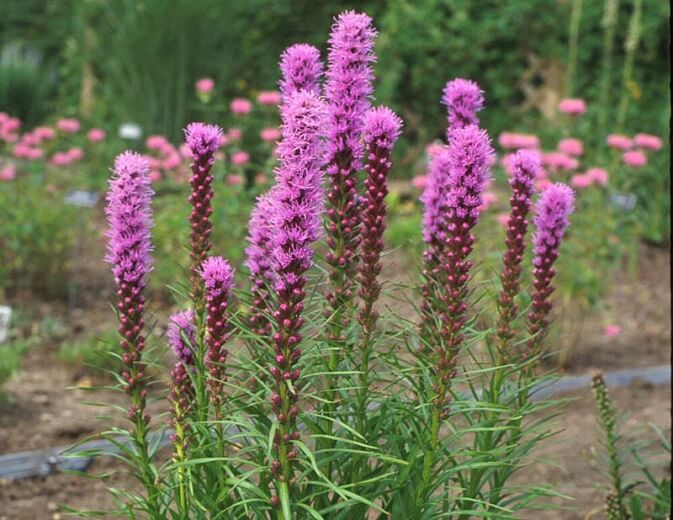 Source: Gardenia
Source: Gardenia
Gayfeather sends up tall spikes of purple flowers that bloom from the top down. These vertical plumes add structure and movement to any garden.
It thrives in sunny areas with well-drained soil, especially where summers get hot. Cutting back spent blooms helps it stay tidy and may extend flowering time.
#15 Purple Heart
 Source: Lotusmagus
Source: Lotusmagus
Purple Heart shows off striking deep purple leaves with small pink flowers nestled along the stems. It’s a tough plant that can handle both full sun and shade.
The color deepens in brighter light, making it extra eye-catching near walkways or containers. Keeping the soil moist but not soggy helps prevent fading and leaf drop.
